CMN 601
Visual Communication: A Critical Approach

1. Course Description
In this challenging course students will critically examine the ways visual images persuade us to act, think, and feel in unique ways. Students will learn vocabulary, concepts, and histories related to visual meaning-making by focusing on the ways images, seeing, and being seen influence the ways we experience the world within social contexts. They will also learn how visual images and image making manipulate and become manipulated by a surrounding visual culture.
Last Revised
CMN 448, FCD 601
Antirequisites
CMN 448, FCD 601
Prerequisites
Note: This is an Upper Level Liberal Studies course
Delivery
Lecture: 3 hours
2. Course Objectives & Learning Outcomes
- To demonstrate appropriate use of terminology to describe, discuss and analyze the meaning of visual images in various contexts
- To understand how visual images in combination with written language and other modes can be persuasive
- To demonstrate an understanding of how visual images interact with and construct visual modes of communication and culture
- To understand how participants both contribute to visual culture and can become manipulated by it
3. Topics Covered
- Issues in Visual communication and culture
- History of Visual Communication
- Visual rhetoric, public persuasion/propaganda
- Surveillance: Control and Security
- Visual Communication and Culture
4. Teaching Method
Workshops
In this course students will engage in class discussions, work on assignments, and engage with visual communication media and issues.
5. Course Materials
Readings are available online in the D2L Brightspace course shell and can be linked to on the Web via the syllabus PDF.
6. Policy
6.1 University Policies
Students are required to adhere to all applicable university policies found in their Online course shell in D2L and the Course Outline Policies.
6.2 Print and Digital Copying Guidelines:
Toronto Metropolitan University complies with Canada’s Copyright Act which protects both creators/owners and users of copyrighted materials. Students should familiarize themselves with TMU Copyright policies and procedures, and contact the Copyright and Scholarly Engagement Librarian at copyrt@torontomu.ca for questions, concerns and clarification of the copyright rules.
6.3 Turnitin.com
Turnitin.com is a plagiarism prevention and detection service to which Toronto Metropolitan University subscribes. It is a tool that helps instructors determine the similarity between student work and the work of other students who have submitted papers to the site (at any university), Internet sources, and a wide range of books, journals, and other publications. While it does not contain all possible sources, it gives instructors some assurance that students’ work is their own. No decisions are made by the service; it generates an “originality report,” which instructors must evaluate to judge whether something is plagiarized.
Students agree by taking this course that their written work will be subject to submission for textual similarity review to Turnitin.com. All submitted papers will be included as source documents in the Turnitin.com reference database solely for the purpose of comparing the similarity of such papers. Use of the Turnitin.com service is subject to the terms-of-use agreement posted on the Turnitin.com website. Students who do not want their work submitted to this plagiarism detection service must, by the end of the second week of class, consult with their instructor to make alternative arrangements. Even when an instructor has not indicated that a plagiarism detection service will be used, or when a student has opted out of the plagiarism detection service, if the instructor has reason to suspect that an individual piece of work has been plagiarized, the instructor is permitted to submit that work in a non-identifying way to any plagiarism detection service.
6.4 Email Communication
Toronto Metropolitan University requires that any official or formal email communication from students be sent from their official Toronto Metropolitan University electronic accounts.
6.5 Video and Audio Recording
No video or audio recording is permitted in class without the express permission of the instructor.
7. Learning Management System
Toronto Metropolitan University supports Brightspace by D2L as its official Learning Management System. University Policies governing Brightspace have been documented at the Courses @ Toronto Metropolitan University Privacy and Security website.

